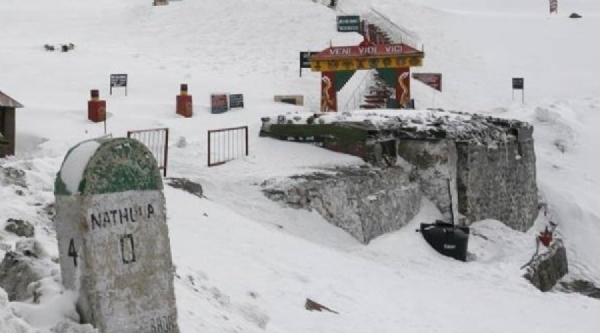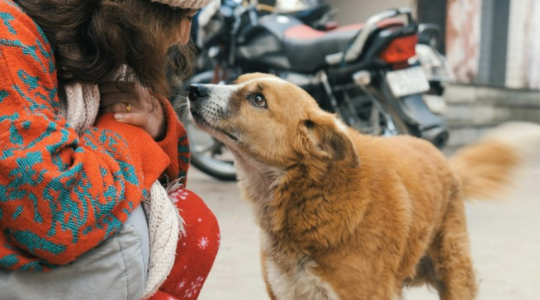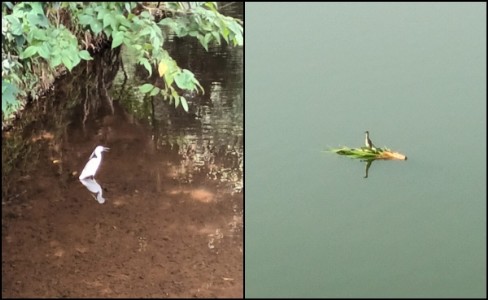Exploring Winters in Bharat: Navigating Sikkim's Winter with Ancient Wisdom
Sikkim"s winter customs stand as a resilient reminder of the profound relationship between humans and their environment, showcasing that sometimes, the old ways are the most sustainable and meaningful.
Total Views | 691
Nestled in the lap of the Eastern Himalayas, Sikkim experiences a winter that paints its landscape with a serene white beauty. The indigenous communities of this Indian state have evolved over centuries, not just adapting to the cold but thriving in it. Let's unravel the traditional practices that Sikkim employs to embrace and conquer the winter chill.

1. Bakhu - The Woolen Shield:
At the heart of Sikkimese winter wear is the Bakhu, a traditional outfit that encapsulates both cultural identity and functional warmth. Woven from sheep wool, Bakhu serves as a shield against the biting cold. Its intricate designs and vibrant colors not only reflect the aesthetic sensibilities of Sikkim but also provide insulation, a testament to the seamless integration of tradition and practicality.
Village leader (Pipon) & villagers offered to wear traditional bhutia bakhu dress.
— Ashwini Vaishnaw (@AshwiniVaishnaw) March 6, 2023
Very colourful and quite warm.
Tuchi che (Thank You)!
Vibrant villages of Sikkim. pic.twitter.com/4L8JjKEbTI
2. Dhungroo - The Portable Fireplace:
In Sikkim, the Dhungroo is not just a cooking apparatus; it is a source of communal warmth. This portable fireplace, traditionally made of clay, is used for cooking and doubles as a heating system. Placed strategically in the center of the room, the Dhungroo radiates warmth, becoming the focal point for family gatherings during the chilly winter evenings.
3. Chhang - Liquid Warmth:
Chhang, a traditional fermented barley drink, is more than just a beverage in Sikkim; it is a winter elixir. Consumed for its warming properties, Chhang is believed to stoke the internal fire, providing comfort in the bone-chilling cold. This age-old brew is a communal drink, often shared during gatherings and celebrations, fostering a sense of warmth and togetherness.
4. Traditional Healing: Ayurveda and Hot Stone Baths:
Sikkim's traditional healing practices seamlessly blend with winter survival. Ayurveda, the ancient Indian system of medicine, is deeply ingrained in Sikkimese culture. Local herbs and spices are used to prepare decoctions that not only fortify the immune system but also generate internal heat. Additionally, hot stone baths, where heated stones are immersed in water infused with medicinal herbs, offer a therapeutic respite from the cold, promoting relaxation and well-being.
5. Tangbays - Eco-friendly Heating:
Sikkim's commitment to sustainability extends to its winter heating practices. Tangbays, traditional eco-friendly stoves, are constructed using clay and locally available materials. These stoves not only provide heat but also utilize biomass fuels efficiently. The tangbay's design ensures minimal impact on the environment, aligning with Sikkim's ethos of harmonizing with nature.
6. Yak Hair Blankets - Himalayan Comfort:
Yak hair blankets are more than just a piece of bedding; they represent Himalayan comfort. Woven from the coarse hair of the region's yaks, these blankets provide insulation against the cold while reflecting the resourcefulness of Sikkim's communities. Their warmth and durability make them an integral part of winter survival in the region.
7. Traditional Games and Dance - Physical Warmth and Community Bonding:
Sikkim's traditional games and dances aren't merely forms of entertainment; they are also strategic ways to generate physical warmth. As communities gather to participate in these activities, the combined body heat generated becomes a natural defense against the cold. These communal events foster a sense of unity, reinforcing the importance of togetherness during the winter months.
In Sikkim, the approach to winter is not just about enduring the cold but embracing it as an integral part of life. The traditional practices are a harmonious blend of cultural heritage, practical wisdom, and a deep connection with the breathtaking landscapes. As the world modernizes, Sikkim's winter customs stand as a resilient reminder of the profound relationship between humans and their environment, showcasing that sometimes, the old ways are the most sustainable and meaningful.
--






